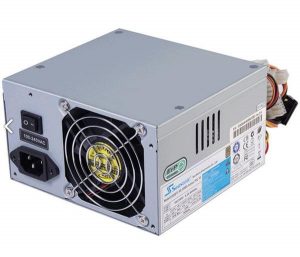COVID 19 – Returning to work
COVID 19 – Returning to work
Whether you thrive on working in an energetic and collaborative workplace day in or day out or you prefer the peace and quiet of working from home, going back to work in an office setting after some time away can be overwhelming. It can be easy to slip into a slower pace of life during lockdown and many people are probably out of sync with their usual routine. With COVID 19 – Returning to work, Trying to figure out how things have changed since you’ve been away can be quite a process. Plus you have to deal with the stress of getting used to a totally different work environment. 
Many people feel confused, worried and apprehensive about going back to the workplace. Organisations will be considering a range of adjustments to the way work is done, to comply with government recommendations. These adjustments will depend on your job and your individual circumstances. Everyone’s situation is unique. However, as you approach your return to work, there are some general principles that will give you the best chance of getting back to work and staying mentally healthy over the coming months.
COVID 19 – Returning to work: The basics of staying safe
Most of you will know the general precautions of keeping safe from the virus but heres a recap to keep in mind when return.
1. Wash your hands frequently;
2. Avoid touching your eyes, nose or mouth;
3. Avoid eating raw meat and unnecessary contact with wild animals (even if it’s a cute bunny);
4. Avoid close contact with anyone with flu-like symptoms;
5. If you develop a fever, cough, or difficulty breathing, seek medical care early;
6. Take particular precaution while travelling.
COVID 19 – Returning to work: Prepare for the new normal
It is important to realise that your office or workplace may not function in the same way before you went on furlough. There will be new procedures and policies to follow in order to keep you, your colleagues and customers safe.  There may also be some physical changes to your working environment such as desk moves, screens and posters in place.
There may also be some physical changes to your working environment such as desk moves, screens and posters in place.
COVID 19 – Returning to work: Third parties/customers.
Assess the risks around third parties entering the workplace, and remember you have an obligation to ensure their health and safety too. In a retail environment, should customers be asked to hand-sanitise on entry? In the office environment, are third-party in-person meetings really needed? Will there be agreed protocols around this (e.g. hygiene requirements, travel suggestions, no hand-shaking)? Consider appropriate protocols for deliveries and collections.
COVID 19 – Returning to work: First aiders/fire marshals.
If your building is to reopen, is there a requirement for appropriately trained first-aid and fire marshals to be present? It might be advisable to arrange online training for staff now, to ensure adequate cover and thereby compliance. Does the building or facilities manager always need to be there?
COVID 19 – Returning to work: Have a return-to-work conversation with your line manager
This is a chance to identify your work priorities and raise any concerns or questions that you have. Things don’t always come out right first time, so if you have something important you want to talk about, try practicing the conversation with a friend, colleague or family member. This will give you the best chance of getting your thoughts across.
Take things one step at a time
The way we all work is likely to keep changing in the coming weeks so we will need to keep adjusting. Don’t expect everything to quickly return to normal. We have a long journey ahead. We may not be able to go back to our old ways of working for some time – and if we are lucky, this could give us an opportunity to do things differently, and better. Look out for yourself, look out for others and take each day and week at a time. For more tips visit Totality services advice page on going back to work here.
The Coronavirus Explained & What You Should Do!
To find out more about how Coronavirus (COVID-9) please watch the video provided below.
In December 2019 the Chinese authorities notified the world that a virus was spreading through their communities. In the following months it spread to other countries, with cases doubling within days. This virus is the “Severe acute respiratory syndrome-related coronavirus 2”, that causes the disease called COVID19, and that everyone simply calls Coronavirus. What actually happens when it infects a human and what should we all do?
Get in touch!
To find out more about how Estio Training can support you with developing the very best Digital Apprentices, complete this form to arrange contact with one of our representitives.



 An Uninterruptible Power Supply (UPS) system supplies your computers with emergency power that lasts long enough for users to save their work and shut down safely after their office has lost electricity. It not only keeps your machines from unexpected shutdowns, but it also safeguards against the electrical surges, spikes, and dips that come from other issues not related to all-out power failures.
An Uninterruptible Power Supply (UPS) system supplies your computers with emergency power that lasts long enough for users to save their work and shut down safely after their office has lost electricity. It not only keeps your machines from unexpected shutdowns, but it also safeguards against the electrical surges, spikes, and dips that come from other issues not related to all-out power failures. That’s why – if you want to keep your business running smoothly– you must back up mission-critical data early and often. It’s a good idea to back up your data to multiple places. That means backing up to a local server, for speedy recovery, and also to the cloud, so the data is safely stored offsite in case your office falls victim to disaster. A best practice is to schedule backups during off hours when there’s plenty of bandwidth available.
That’s why – if you want to keep your business running smoothly– you must back up mission-critical data early and often. It’s a good idea to back up your data to multiple places. That means backing up to a local server, for speedy recovery, and also to the cloud, so the data is safely stored offsite in case your office falls victim to disaster. A best practice is to schedule backups during off hours when there’s plenty of bandwidth available.
Recent Comments